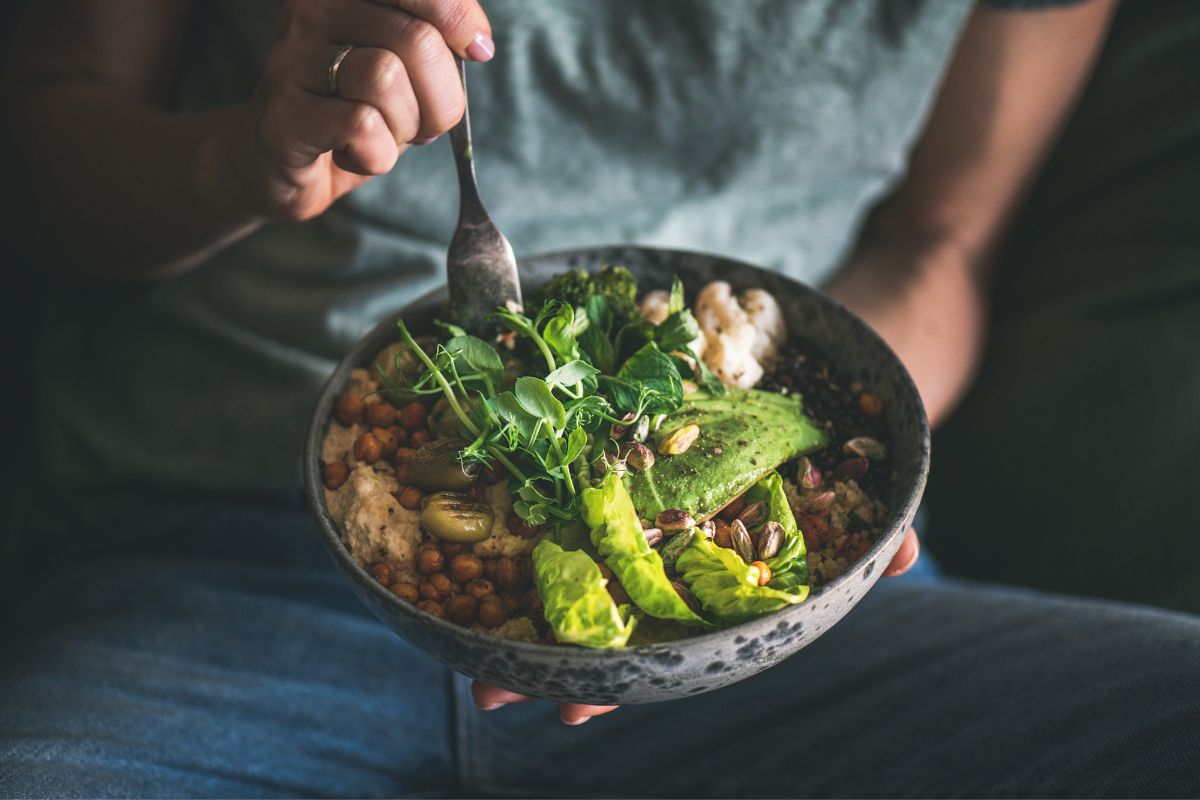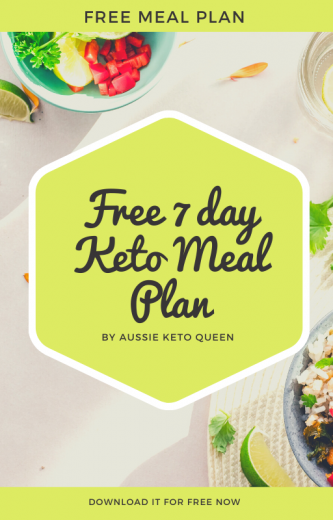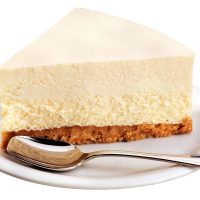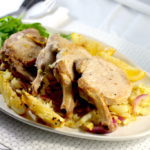
Keto, or the ketogenic diet, is a low-carb, high-fat approach to eating. Even though keto has gained popularity over the years, years of misleading nutrition information have led to a cultural fear of fat.
These false notions can make it difficult for people to adopt a keto diet. Many who try keto start by consuming too much protein and too little fat.
This raises the question, what happens when you eat too little fat on a keto diet?
You’ll find the answer to this in this post, including protein poisoning risk, digestive issues, and tips to help you increase your fat intake.
Human History And Fat
Before we get into the consequences of not eating enough fat on a keto diet, we must go over the role of fat in a human diet.
Low-carb, high-fat diets aren’t just a fad. People have been eating in this way for around 2 million years before agriculture developed. Looking at this evolutionary-wise, flourishing on a high-fat lifestyle is a big part of humanity.
Humans descend from apes, but we separated from our animal ancestors when we learned how to use tools. These items helped us salvage fat, meat, and bone better than what less agile predators left after their hunt.
Once humans learned how to feed themselves with fat, a high-energy fuel, the human brain became larger and smarter. This helped us adapt to hunt bigger animals with a larger body fat percentage.
This fast brain growth rate and skills to hunt fatty animals explains why megafauna (large animals) became extinct in areas of human migration. Smaller animals that live with us today were too little and lean to try hunting.
Many researchers do believe that Stone Age ancestors ate a lower-carb style diet for around two million years of development. This included lots of high-quality foods full of nutrients, fiber, protein, and fat.
The modern human body is biologically identical to our low-carb ancestors. We have a shared taste and capability to thrive on fat (as well as protein and high-fiber plant foods).
Some researchers disagree with modern beliefs and believe that humans were facultative lipovores. This notion means that our system prioritized fat, but received energy from other sources, like meat, when required.
This hypothesis is yet to be proven, but there are a few points that support the genetic lipivorism theory:
- Humans are unique from other mammals as our bodies tend to store fat.
- Humans can enter ketosis easily, which is when the body metabolizes fat into energy. This occurs in regular energy-deficient states, instead of starvation periods, making us different from various predators.
- Humans possess large energy-hungry brains that consume fat from birth till death.
Consequences Of Eating Too Little Fat On Keto
Now that you know the importance of fat in the human diet, here are some of the things that can happen when you don’t eat enough fat on keto.
Protein Poisoning
Humans can’t receive energy from protein as well as they can from carbohydrates and fat. Compared to various carnivores, humans can overdose on protein at a fast rate.
For instance, cats can receive up to 70% of their energy requirements from protein. A cat’s system is better designed to turn the protein into glucose, which feeds the brain.
In contrast, the human brain needs more fat, particularly if you’re on a keto diet. If a human receives over 35% to 50% of their total energy from protein, they can experience protein poisoning.
Eating too much protein over a long period can affect the liver’s capability to stimulate urea synthesis. This process is necessary to break down protein.
Signs of protein poisoning are:
- Hyperinsulinemia (large amount of insulin in the blood)
- Hyperammonemia (high levels of ammonia)
- Hyperanimoacidemia (lots of amino acids in the blood)
- Diarrhea
- Nausea
- Fatality within two to four weeks of extended protein poisoning
Protein poisoning is rare, though there is a higher risk of experiencing it on a high-protein diet. If you are on keto, Paleo, or Atkins, eating fat along with a limited amount of carbs can reduce your chance of protein poisoning.
Micronutrient Deficiencies
Fat-soluble vitamins like A, D, E, and meat-particular K2, are significant substances for maintaining proper well-being. These manage our hormones, gut health, and immune system.
Vitamin A and D instantly control bile acid production, which is necessary for handling the larger amounts of fat on keto. If you are on keto, you receive these vitamins from fatty meat sources, particularly from healthier saturated fats.
Vitamin A and D deficiencies occur quite frequently. A study discovered that 82% of participants living with IBS, along with 30% of healthy individuals from a different group, were lacking in vitamin D.
Several people who are on keto tried the diet to treat digestive conditions, like IBS. If this is the case, they are probably deficient in these important fat-soluble nutrients.
Eating too little fat on keto may lead to vitamin deficiencies that can make it difficult to break down fat sufficiently. This can make it harder to transition to the diet overall.
Carb Dependence And Satiety
The typical American diet is full of carbohydrates from sugar and processed grains.
Carbs and sugar have been found to activate reward systems and neurotransmitters in the brain. This is comparable to the way other addictive materials do so, like cocaine and alcohol.
If left unchecked, carb dependence can cause severe metabolic conditions, including heart disease, diabetes, cancer, and infertility.
Fat consumed independently from carbohydrates isn’t as addictive, especially when compared to high-GI foods.
Fat is also a satiating macronutrient. It can make us feel fuller for longer, so we don’t feel as hungry. As a result, eating fat is a good way to reduce food cravings.
The keto diet involves eating a very low amount of carbohydrates, which means the body and brain are unable to use sugar.
However, if you eat too little fat on keto, you won’t be substituting these calories and carbs with fat. This can cause powerful carbohydrate cravings that increase your chances of binging on processed, high-carb food.
If you snack more, you’ll consume more calories, which can result in eating more than you need.
This may lead to weight gain, fatigue, and insulin resistance. If this is left unchecked, you also increase your risk of health conditions, like heart disease and diabetes.

How To Eat More Fat On Keto
Now that you know why it’s so important to eat enough fat on keto, you need to ensure you’re consuming enough when on the diet.
Your recommended amount may vary depending on your lifestyle, but generally speaking, between 60% and 80% of your daily intake should come from fat.
Between 10% and 20% of your intake should come from protein, while 5% to 10% should come from carbs.
Most of your calories should come from foods that contain healthy fats. So, if you’re consuming 2000 calories each day, you’ll need to eat 165 grams of fat, at the greater end.
Here are some good healthy fats sources to include in your diet:
- Avocados
- Cacao nibs
- Seeds and nuts
- Olives
- Avocado oil
- Unrefined coconut oil
- Canola oil
- Sesame oil
- Nut nutter
- Oily fish
Other high-fat foods that work well in a keto diet are cheese, whole eggs, grass-fed butter, and full-fat Greek yogurt.
These foods are a good way to start increasing your fat intake, but if you’re finding this a little difficult, here are some tips to help:
High Fat Garnishes And Toppings
High-fat toppings and garnishes are easy methods of increasing your fat intake. You can add ingredients, like cheese, avocados, cured meats, seeds, and nuts to your lower-fat recipes.
Depending on the ingredients you choose, you’ll also add some more flavor to the meals you’re eating. Try some ingredients like grated cheddar, parmesan, macadamia nuts, guacamole, or black olives.
You don’t need to stick to solid food either. Oils, dressings, or simple melted butter are simple, high-fat additions.
Whether you’re making a sandwich, salad, or snack, high-fat garnishes can simultaneously give your meals more flavor and fat.
Bulk Up Drinks
Just like adding fat to food, you can also add fat to your drinks! This works better for hot drinks, as whole milk, whipped cream, and creamer taste nice in tea and coffee.
Many people on the keto diet like to add butter to their coffee, known as Bulletproof coffee. This is usually made with higher-quality fat sources, like MCT coconut oil and grass-fed butter.
Avoid Low-Fat Foods
If you’re accustomed to the American diet, it can seem instinctive to buy low-fat products at the grocery store, especially if you’ve tried to lose weight in the past. If you’re on keto, it’s best to switch to full-fat items instead.
Whether you’re choosing milk, yogurt, cheese, or any other product that has a ‘lighter’ option, choose the version that’s full of fats. These will provide energy and keep you satiated for the day ahead.
Experiment With Avocados
Avocados are natural additions to the keto diet. These are healthy, delicious, and high in fat! If you haven’t already, adding avocados to your diet can help you increase your fat intake.
Avocados taste good in salads, on top of toast, and mashed into guacamole. They also work well on their own, especially if you add a little lemon and salt.
If you’re not a fan of avocado’s earthy flavors, add it to recipes that mask its taste, like avocado brownies, mousse, or fruit smoothies.
Choose Fattier Fish
Fish is a wonderful addition to a keto diet, but make sure that you choose high-fat options. Oilier cuts, like salmon and tuna, are good choices, as they are full of monounsaturated fats.
Cod, sole, flounder, and tilapia, are low in fat, so it’s best to avoid these unless you’re adding fat to them.
Cook With Fats
Many people are used to cooking without fat. Air fryers and low-calorie frying sprays are popular, but they aren’t necessary for those trying to increase their fat intake. Use fat to cook your meals as much as possible.
Butter, olive oil, and ghee add fat to your dishes and simultaneously make your dishes taste great.
Less popular choices include duck fat, peanut oil, and even bacon grease. These can give your meals interesting flavors, so try a few fat sources out and see which ones you prefer.
Choose High-Fat Snacks
Snacking a lot isn’t often advised, but every so often, you may get hungry and cannot wait until the next meal. If you’re on keto and need to snack, some choices will be better for you than others.
It’s best to choose ‘whole’ snacks that are low in carbs and high in fat. Choose options like cheese, meat, hard-boiled eggs, and cheese over junk, processed food. You can also try making ‘fat bombs’, which we’ll cover below.
Make Fat Bombs
Fat bombs are wonderful keto-friendly dessert recipes. These can help you get more fat without increasing your carb intake. Naturally, desserts shouldn’t take up too much of your daily intake.
However, if you do want an occasional treat, there are lots of keto fat-bomb desserts to try.
Fat bombs are often rich and hearty, so if you want a lighter option that’s still high in fat, try adding whipped cream to fruit. Berries or warm apples taste great with this, especially if you add a little cinnamon on top!
Experiment With Recipes
Beginning a new diet can be disheartening, as you may not be able to enjoy your favorite meals. You may aim to find low-carb alternatives, but their flavor may not live up to the real thing.
A better alternative is to find some new, keto-friendly recipes. There are lots of recipes that are higher in fat, low in carbs, and full of flavor.
Whether it’s a savory breakfast frittata or a sweet strawberry fat bomb, new recipes can help you feel excited about a diet.
Flick through some low-carb cookbooks or have a search online, then see what you can come up with in the kitchen!
Final Thoughts
If you’re on keto, it’s very important to eat enough fat. As keto involves lowering your carb intake, inadequate fat intake can cause some serious issues.
Protein poisoning and nutrient deficiencies are possible, while carb cravings and hunger pangs are more likely.
If you’re finding it hard to eat enough fat, cooking with fat sources, using high-fat toppings, and avoiding low-fat foods can help make the process easier.
Remember to consult your doctor or medical provider before trying a new diet plan, or experiencing any symptoms as a result of a high-fat diet.





